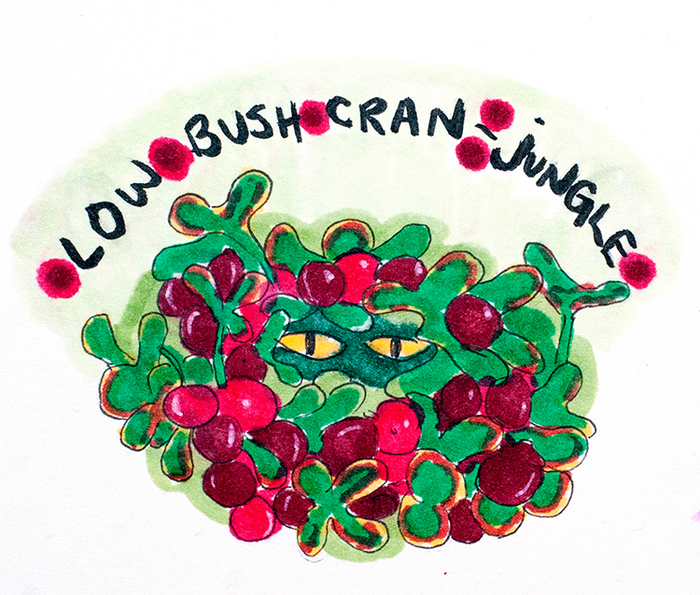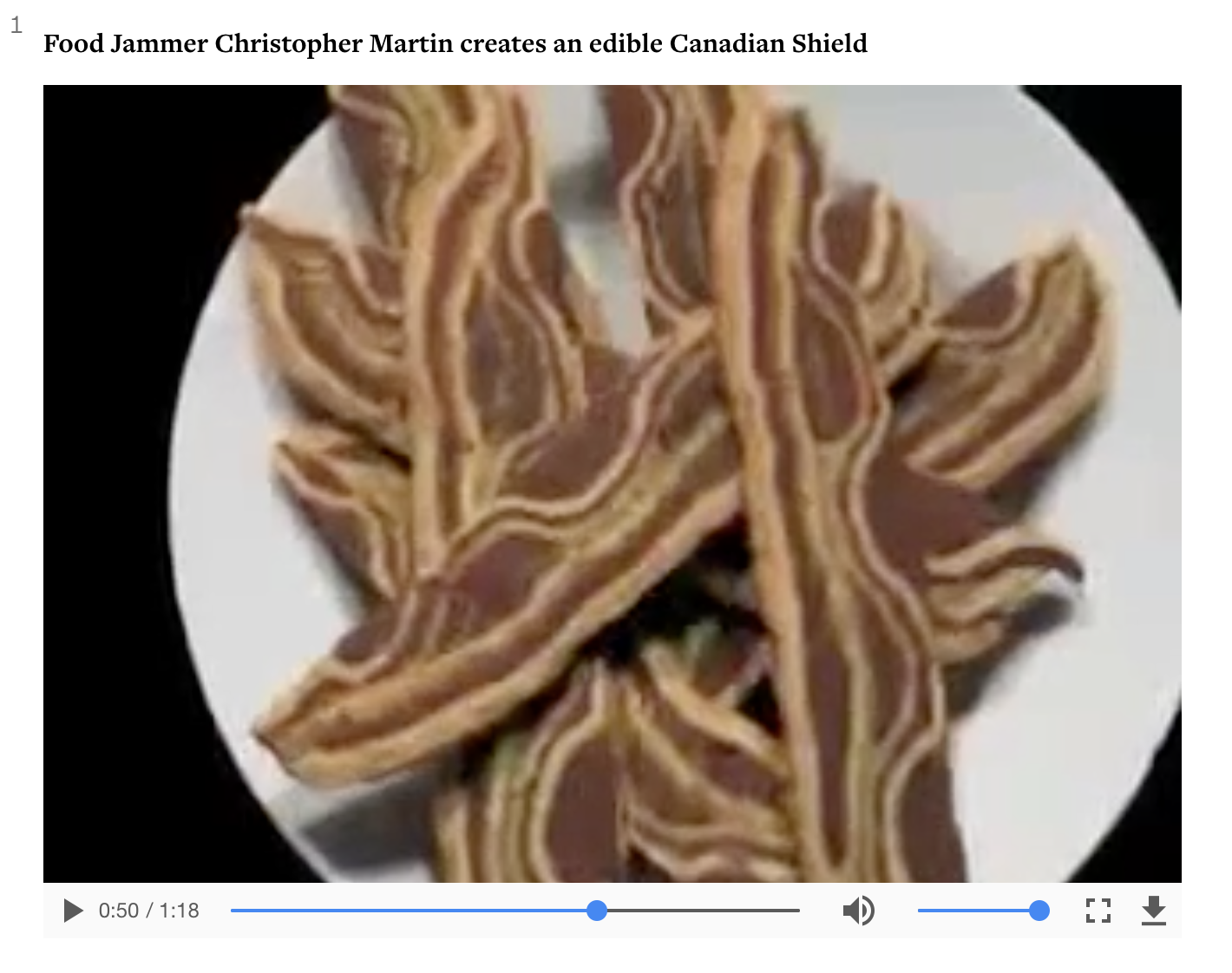A scholarly journal devoted to cuisine is uncommon, but a “journal of culinary cultures in Canada” actually seems quite bold. How did such an idea come to fruition?
In the early 2000s, there was increased interest in cooking and culinary trends. This interest was evident in the success of television networks like Food Network Canada and in the mainstream popularity of programs such as MasterChef Canada. This marked interest in Canadian mainstream, however, has had an impact on research. Researchers are increasingly interested in food and there has been a proliferation of university programs devoted to the study of food, nutrition, diet, or, more broadly, in what is now frequently called “Food Studies”. At the time, there were few publications or academic venues for such food-related discussions. Nathalie Cooke, Professor at McGill University and founder of the journal, seized this opportunity and created CuiZine in 2008 to address the topic and to create a space for the critical discussion of food-relate phenomena. As our web site states, CuiZine is a place to study all things food-related in Canada.
Food is connected to all levels of human interaction: social, political, cultural, and even medical. From the inaugural issue onwards, interest for the journal and for Food Studies in general has only grown. We have published thematic issues that have been received favorably by the public and we have published articles that have generated interest in the press—especially a recent article on poutine and its connection to Quebec’s culinary identity [1]1CuiZine
Poutine Dynamics
2016.
Cuisine, food, is it an object of research or simply a pretext to talk about Canadian society?
Both! As Brillat-Savarin said: “Tell me what you eat, and I will tell you what you are”. Food is a socio-cultural object of study; therefore, to study the food practices or food itself, is to study society, culture, norms, and discourses.
For example, studying historical menus allows us to identify new elements specific to important events (we may recall, for instance, the conferences held at the Chateau Frontenac in 1943-44, which were attended by Churchill, Mackenzie King and Roosevelt [2]2CuiZine
L’étude du menu comme représentation de l’identité culinaire québécoise : le cas des menus au Château Frontenac
2011); to better understand the evolution of social movements (for example, feminist movements and waves in the 1970s and 1980s in the context of so-called feminist restaurants of the time [3]3CuiZine
Counter Culture: The Making of Feminist Food in Feminist Restaurants, Cafes, and Coffeehouses
2016); and to see history in a new light (we published an excellent study on urban development in Montreal and its relation to subsistence livestock [4]4CuiZine
Meatscapes: Spaces and processes associated to subsistence livestock
2016—an unusual and very interesting study).
CuiZine is also a space for creation and expression where memories are related to food. It is unusual for a scholarly journal.
Most of the journal’s research content comes from scholarly production rooted in the social and human sciences, but we also accept creative and artistic submissions. We wanted to reach out to audiences that are increasingly converging online and in digital spaces. Also, food tends to lend itself easily to all sorts of media and we believe readers can benefit from seeing this subject matter approached from various angles.
We are also very mindful of accessibility, specifically access to scholarly knowledge. Research content is not necessarily accessible to everyone, in the sense that readers must have shared conceptual understandings, which is not always the case. Creative work, in contrast, is generally more accessible in that visual art, for instance, is somewhat of a ‘common language’. Interpretations of art are more dynamic and fluid, for instance. Thus, multimedia content is one way to be more accessible to a wide-ranging audience.

How do you evaluate submissions that do not come from the academic field?
We seek the assistance and expertise of subject-field experts or colleagues in related fields of practice: poets, videographers, artists… But we also evaluate this content with an eye to our readership: will this submission generate new ideas or trigger debate? Does the work or creative piece offer new insights on food and food practices?
CuiZine is a digital, open access journal. Why did you opt for this mode of distribution from the outset?
Again, this is with an eye to accessibility. Yes, accessibility through bilingual and translated content in both official languages, but also open access to research and knowledge.
Moreover, a digital space allows authors to investigate food using mediums they feel are most appropriate or suited to their research or interests: the written word, film, mixed media, etc. A digital journal also means that we can tackle specific questions from a truly interdisciplinary way, without the constraints of traditional print media. After all: we eat with all our senses, why not study food in the same?
Open access is also a standard now in academe. We wanted to ensure distribution of our content and open access is the appropriate strategy to do so. We can reach a wider audience and it ensures access to data that might be relevant for different stakeholders, even beyond academic institutions.

Since the journal cannot count on subscription fees or author fees, how is it financed?
We receive support from McGill University Library and the University of Saint-Boniface. Although our budget is limited, it is sufficient to carry out the activities that are essential to publication. The journal has been fortunate to count on collaborators and volunteers. The contribution of volunteer translators (students at the University of Ottawa and the University of Saint Boniface, in particular) has been significant. We also have volunteers who help us create some of our social content for Twitter. It’s a collaborative endeavour and we are very grateful for the support that we have received and that we continue to receive.
What is your favorite dish to help survive the Canadian winter? And what is the Canadian dish par excellence, the one that could be our ambassador?
The answer would depend on who you ask on the editorial team. Poutine would be a likely candidate as it speaks to both questions: on the one hand, it’s a decadent dish, so it would likely keep people warm. On the other hand, it’s a dish with international notoriety: it’s been adapted in a variety of ways to meet local and global tastes. Think Moroccan or Mexican poutine, for instance. Apparently pilgrimages to Quebec City’s Chez Ashton are frequent.
That said, Canada could very well have other ‘ambassador’ dishes. Indigenous cuisines are often under-represented, which is unfortunate. Since arriving to Winnipeg, I’ve personally enjoyed getting acquainted with Indigenous recipes and food and bannock is a favourite. It’s a round bread, made of grains. It can be served in a number of ways, but I quite like it with a Saskatoon berry jam.
It’s really difficult to choose just one dish!
If you had to a tasting menu for CuiZine, what articles or pieces would you choose?
A CuiZine tasting menu:
“Poutine Dynamics” by Nicolas Fabien-Ouellet [1]1CuiZine
Poutine Dynamics
2016
This article caused quite a media stir and it was picked up in a few Canadian dailies, including The National Post. The author explores poutine and its relationship to Canadian – or should we say Quebec’s – identity.
“The Many Lives of Mustard” by Christopher Laurent [5]5CuiZine
The Many Lives of Mustard: Journey of a Familiar Condiment
2013
Canada happens to be one of the biggest producers of mustard seed in the world – a little known fact. Here, read on for a fun history of a popular condiment.
“L’art de la mesure” by Yannick Portebois [6]6CuiZine
«La Cuisinière canadienne, contenant tout ce qu’il est nécessaire de savoir dans un ménage [...]», Montréal, imprimée et publiée par Louis Perrault, 1840, 114 pages
2014
This is an example of an article from our section “Cooking the Books” in which foodies literally cook recipes from historical cookbooks. This specific piece tests a recipe from La cuisinière canadienne, a cookbook published in Montreal in 1840.
“Ce cuisinomane, il est fou, dis !?” by Elizabeth C. Saint [7]7CuiZine
Ce cuisinomane, il est fou, dis !? – Opinions sur un néologisme et anticipation de son implantation dans l’usage
2016
How would you translate foodie? It’s a tougher question than you might think. See what terminologists have to say on the matter.
“Canadian Shield Shortbread Cookies” by Christopher Martin [8]8CuiZine
Canadian Shield Shortbread Cookies
2008
What would the Canadian Shield look like if it were a shortbread cookie? Christopher Martin uses multimedia to good effect in this top pick.
We believe this tasting menu represents some of the best of what CuiZine has to offer, both in terms of rigourous research and in terms of creative and unique content. As they say in French: bon appétit!

